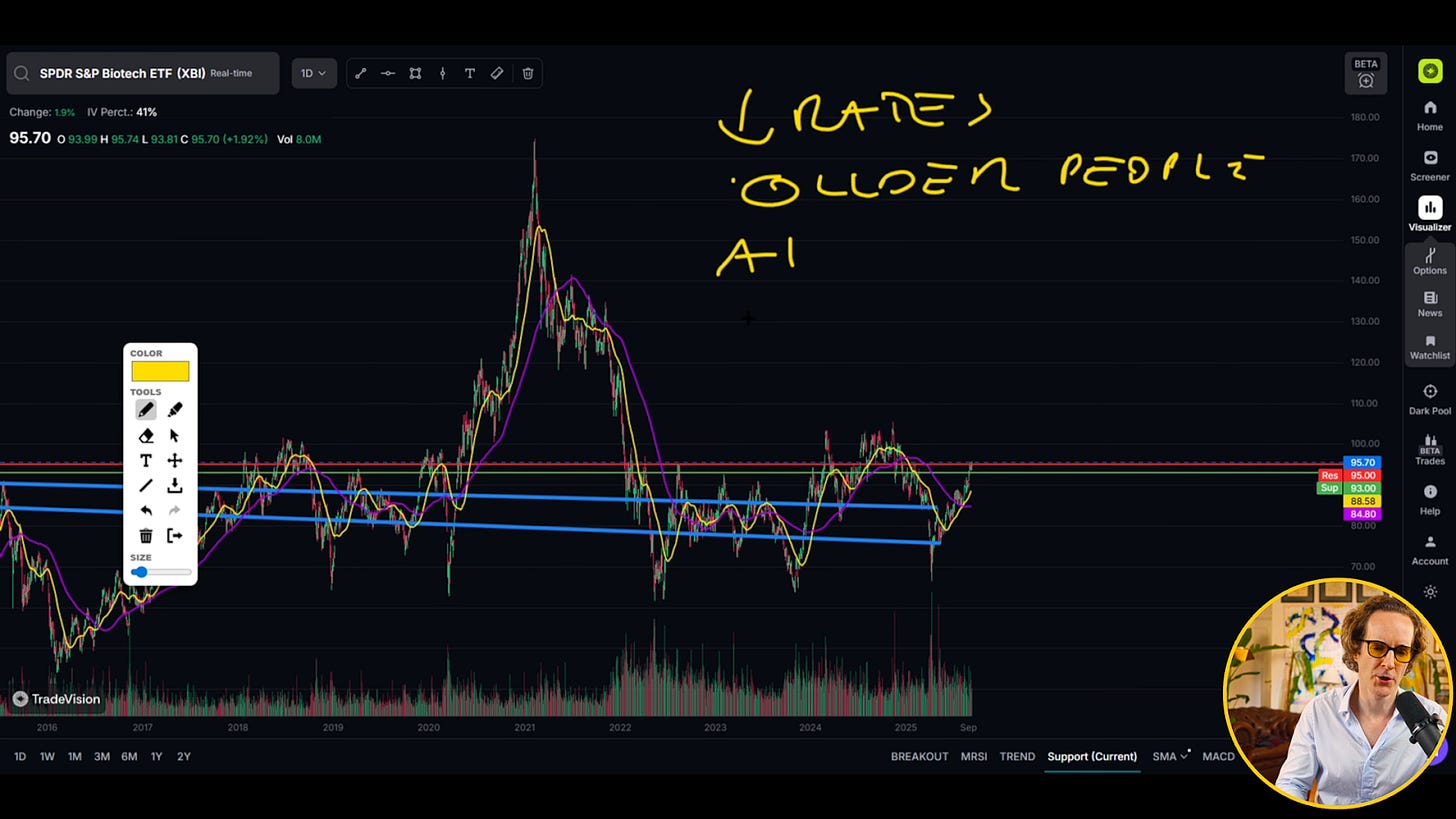Felix Prehn and Goat Academy: Eight High‑Growth Stocks to Watch Now
Discover eight high‑growth stocks across building products, gold, retail, specialty retail, and biotech. Clear entry logic, simple definitions, and why rate cuts matter.
Felix Prehn, a former banker and investor, leads Goat Academy, an education community focused on helping regular investors understand markets in a simple, rule‑based way. This article outlines eight high‑growth stocks across five sectors that may benefit as interest rates fall. It also explains the simple signals used to judge trends, entry levels, and risk.
Note: This is educational content, not financial advice.
Why rate cuts can fuel growth stocks
Lower interest rates make borrowing cheaper. Companies can invest more, and consumers can spend more.
Some sectors are very sensitive to rates, like building products and biotech.
Trend signals help investors avoid buying too early.
Definitions:
Moving average (MA): The average price over a set number of days (for example, 50‑day or 150‑day). It helps show trend direction.
Breakout: When a stock rises above a recent high. This can signal fresh demand.
Volume: The number of shares traded. Rising volume during moves can confirm strength.
Sector 1: Building products and home improvement
Rate cuts, a housing shortage, and energy‑efficient retrofits can support demand.
Fortune Brands Innovations (FBIN)
Makes household fixtures and smart locks (Moen, Master Lock, Yale).
Improving margins and strong free cash flow.
Idea: Wait for a breakout above recent highs rather than buying in a range.
Masco Corporation (MAS)
Brands in faucets, paint, and cabinets.
Focus on higher‑margin products and steady cash generation.
Idea: Similar breakout setup above a recent ceiling.
Owens Corning (OC)
Insulation, roofing shingles, and energy‑efficient materials.
Long, calm sideways base can clear out sellers and set up a stronger move.
Idea: Watch for a decisive move above prior peaks on firm volume.
Why breakouts matter: Buying slightly above a prior high reduces the chance of getting stuck during long sideways periods.
Sector 2: Gold and precious metals
When rates fall, the “opportunity cost” of holding gold drops. If bonds pay less, gold can look more attractive. Central‑bank demand and ETF inflows can add fuel.
AngloGold Ashanti (AU)
Large, diversified gold miner with operations across three continents.
Rising price with strong volume can confirm institutional interest.
Dakota Gold (DC)
Exploration stage focused on a historic, highly productive district in South Dakota.
Higher risk than established miners, but can move sharply with the gold cycle.
Note: Explorers depend on drilling success; cash balance helps bridge development.
Wheaton Precious Metals (WPM)
Streaming/royalty model: finances miners in exchange for a fixed share of future production at a discount.
Higher margins and less operational risk than owning mines.
Acts like a leveraged play on metal prices without mine‑site execution risk.
Definitions:
Streaming/royalty company: Provides upfront capital to miners and receives metal later at a preset, low price, creating high profit margins when metal prices are strong.
Sector 3: Retail and specialty retail
Consumer spending is stabilizing, e‑commerce is rising, and AI can improve inventory and personalization.
Lands’ End (LE)
Heritage apparel brand with a large uniforms business for schools and companies (B2B).
Margin expansion, buybacks, and improving digital operations.
Idea: Above long‑term moving averages and approaching prior highs.
Victoria’s Secret (VSCO)
Turnaround with broader product mix (beauty, loungewear, activewear) and international growth.
Large, long base followed by a breakout can mark a trend change.
Bonus specialty retail: Chewy (CHWY)
Pet supplies with strong subscription (“Autoship”) revenue and expansion into pet health.
Subscriptions can smooth revenue and improve planning.
Definition:
Autoship/subscription: Automatic recurring orders. This can create steady revenue and better inventory control.
Sector 4: Biotech
Biotech is very sensitive to rates. Lower rates help funding, M&A, and investor risk appetite. AI is cutting drug‑discovery costs, and an aging population supports long‑run demand.
Ascendis Pharma (ASND)
Drug‑delivery tech (TransCon) that turns daily injections into weekly ones.
Approved products in rare diseases and late‑stage pipeline assets.
Two common entries: buy strong breakouts above recent highs or buy pullbacks to prior support.
Definitions:
Rare‑disease drug: Treats small patient groups and often receives premium pricing and regulatory support.
Priority review: Faster FDA review timeline for drugs that could offer major advances.
How entries and exits can stay simple
Trend first: Favor stocks above their 150‑day moving average with rising 50‑day MAs.
Breakouts: Look for closes above recent highs on higher‑than‑normal volume.
Exits: Use “profit locks” (stop losses placed below recent swing lows) to protect gains when momentum fades.
Plain‑English rule of thumb: Buy strength with confirmation. Lock in profits if the stock stops making higher lows.
About Felix Prehn and Goat Academy
Felix Prehn has worked inside banking and investing and now teaches simple, rules‑based methods at Goat Academy. The focus is on clarity, repeatable processes, and risk control for regular investors.
Learn more about Felix and the mission at Goat Academy: Felix PrehnGoat Academy.





